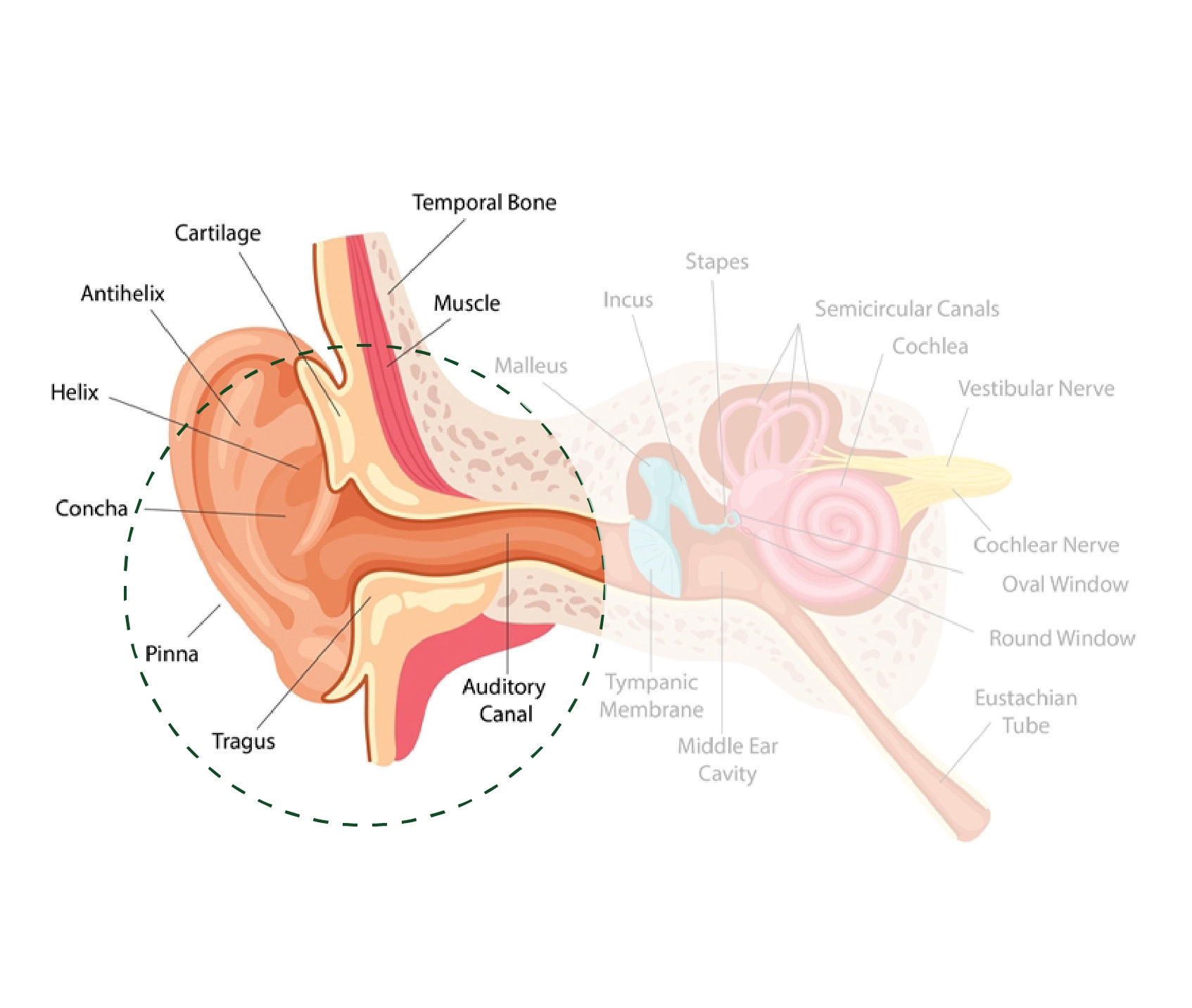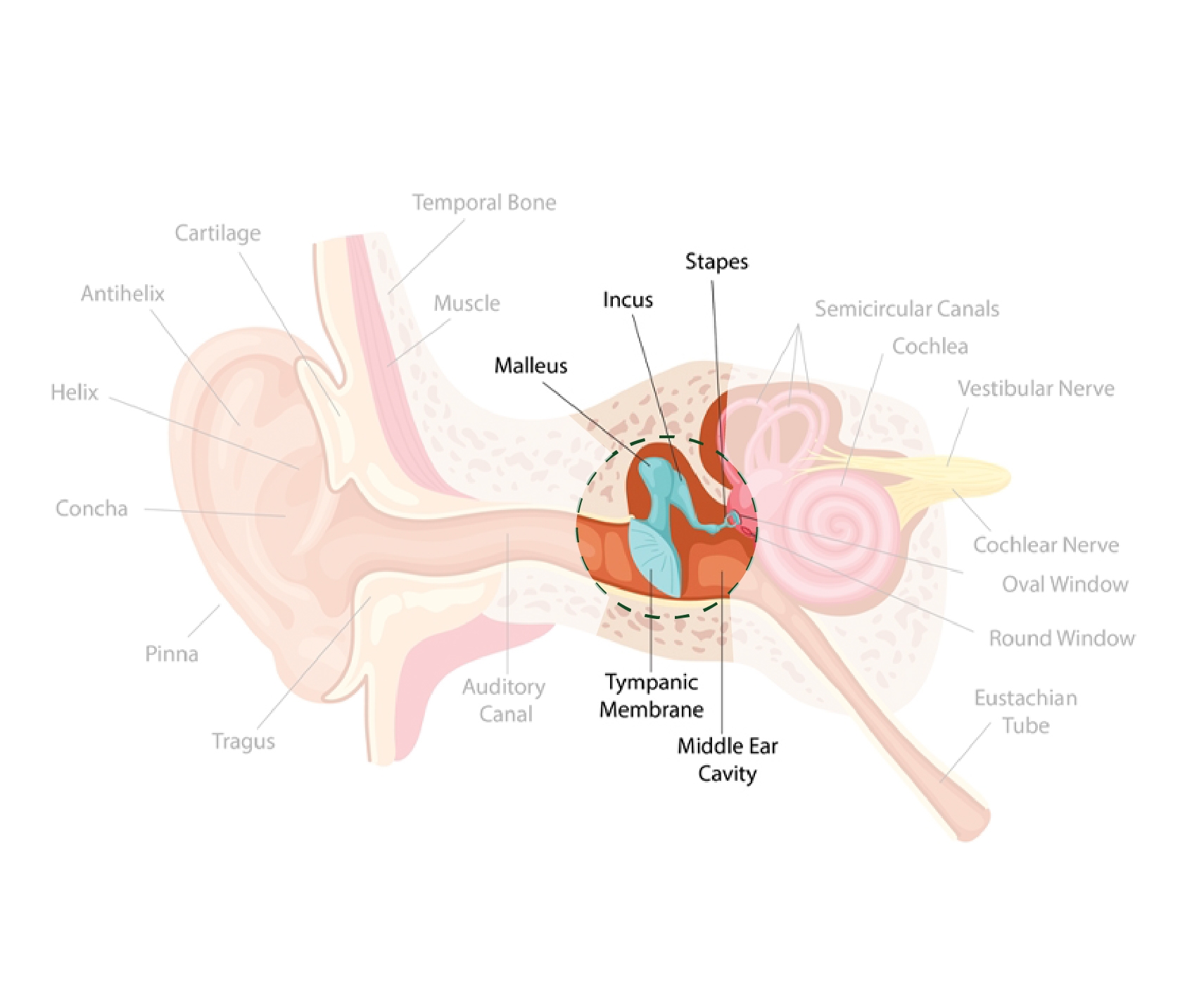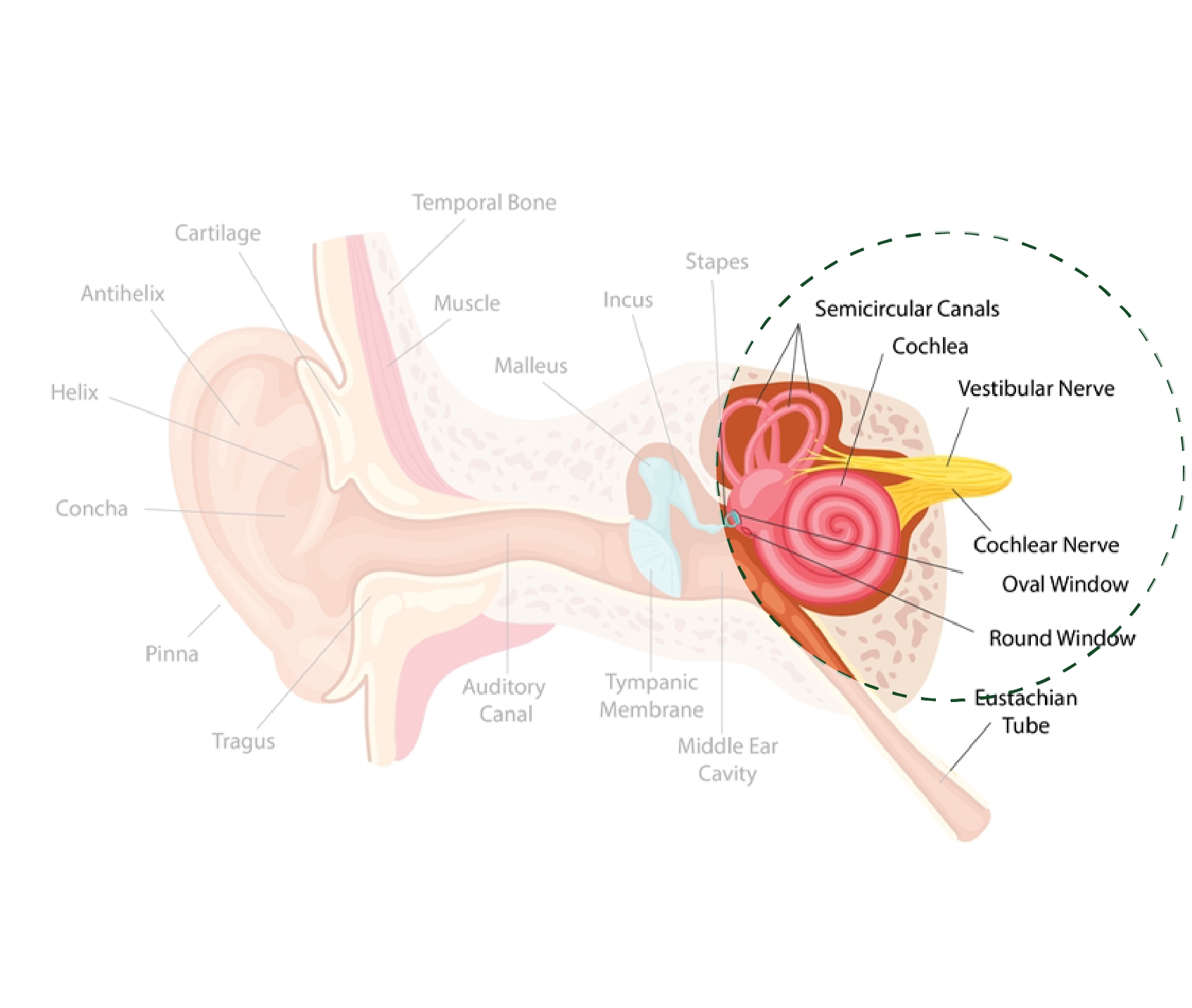Free hearing exams and assessments
For those looking for hearing exam, our hearing care experts administer a full hearing test in our soundproof booth, using the latest testing equipment.
We hear sounds all day, but how does this vital sense work? Take a closer look at your ear’s anatomy.
What people commonly call "The Ear" is only a tiny part of the organ that’s responsible for hearing. At first glance, we can only see the outer ear or "auricle." While the ear's outer portion is essential, it's only a small part of the hearing system. Anatomically, the human hearing system includes the outer ear, middle ear, and inner ear. Your ear canal connects these three components, with all external sound running through it.
When looking at someone's ear, you see the auricle and the part of the outer ear canal that extends into the head and up to the eardrum. Your outer ear is where sound waves first arrive. From here, they’re guided inwards through the auricle like a funnel. The shape of the outer ear naturally amplifies sound like a resonator. The design and natural anatomy of ears also prevent wind from causing background noise.

The area directly behind the ear drum is called the middle ear. The eardrum is a thin membrane that absorbs incoming sound waves. From there, minute oscillations are conducted to three tiny ossicles, the smallest bones in the human body. They can amplify oscillations 20-fold, guaranteeing proper conduction to the inner ear. The Eustachian Tube extends down to the nose and throat from the middle ear, ventilating and equalizing pressure.

The inner ear begins where the Stirrup hits the next membrane, which is called the "Oval Window." Inside the oval window is the organ of equilibrium and the cochlear. The cochlear resembles a snail shell and is about the size of a pea. It contains three canals filled with liquid. The central canal is home to the organ of Corti, the actual organ for hearing. Your inner ear plays an essential role in hearing and balance.

Sound waves only have meaning once they're transformed into electrical signals and are sent to the brain. These signals are sent via the auditory nerve to the areas of the brain responsible for emotional assessment. When meaning is attached to tones, it’s connected to existing patterns within the brain’s cortex. This process allows us to understand speech, recognize a person’s voice, and judge hazardous situations. To test your body's ability to transmit these signals to your brain, take our online hearing test.
Get a hearing test onlineSound waves can reach the inner ear via air or bone conduction. With bone conduction, oscillating air hits the outside of the skull and makes it oscillate slightly. In cases where an interruption of oscillating air causes hearing loss, bypassing the system through bone conduction devices like cochlear implants is an option for some patients. However, air-conduction hearing is less effective than bone-conduction hearing.
AudioNova has all of your audio care needs covered. See how we can help with your hearing health care needs.